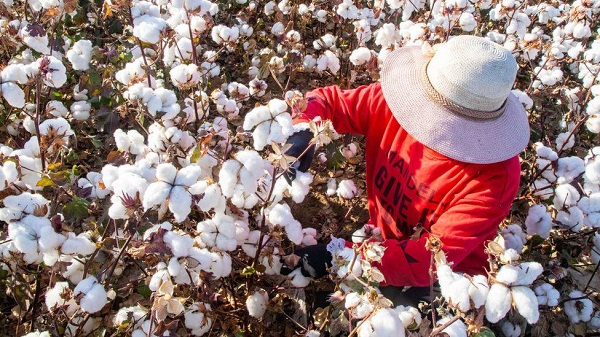
Xinjiang cotton offers comparative advantage for Pakistan, says a report by Gwador pro. The industry enables Pakistani farmers to adopt Chinese techniques of intercropping and double cropping.
Close cooperation in mechanical harvesting
Mehmood Ul Hassan Khan, Director, Center for South Asia & International Studies (CSAIS) notes, mechanical harvesting helped Xinjiang save 50 per cent water consumption and 30 per cent fertilizer use. It also helped the region reduce labor costs up to 30 per cent besides enhancing yield by the same percentage. Therefore, Khan recommends, Pakistan and China should explore close cooperation in mechanical harvesting to further strengthen cotton yields.
Develop new seed varieties
The report also advises Pakistan farmers to develop new types of cotton seeds, and employ Chinese molecular biology to introduce these seeds. The Punjab government has allotted two agro-based industrial zones in Vehari and Bhalwal to offer several incentives including tax waivers to Chinese firms to form a knowledge platform between these two countries.
Despite it being one of the largest crops in the country, Pakistan lags behind Xinjiang in cotton production. Xinjiang companies are able to breed high-yield and high-quality cotton seeds suitable for planting in Pakistan. The country can benefit from the adoption of natural gold fiber cotton.
Facilitating JVs in garment projects
As per a Daily Times report, Pakistan can also benefit from joint efforts and close cooperation with Xinjiang in cotton production that may facilitate joint ventures in garments projects in future. The largest cotton growing region in China, Xinjiang produced cotton over 2.51 million hectare in 2020 nearly the same as 2019. This year too, Xinjiang is expected to see another bumper harvest, posing a bright outlook for the national economy and exports.
Over 50 per cent of farmers in Xinjiang usually grow cotton, shows statistical data from the China Cotton Association (CCA). Majority of this comes from ethnic minorities who mainly engage in cotton farming for their daily livelihoods. . Boosts employment in China
China’s cotton industry also provides substantial employment opportunities to many migrant workers. In the last two months, nearly 4,000 people in the Aral township in Aksu Prefecture joined the migrant cotton-picking community, earning an average RMB 6,000 (about $895) per capita. Nowadays, cotton fields in north Xinjiang are mainly harvest using machines and the practice becoming popular in south Xinjiang as well. Around a fifth of the world’s cotton is produced in Xinjiang. To boost growth, Xinjiang has shared its cotton growing expertise with a few Central Asian countries.
China’s comparative advantage in cotton research and industrialization and its advanced breeding and seed production techniques can benefit Pakistan cotton growers under the CPEC agreement.












